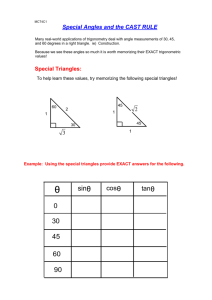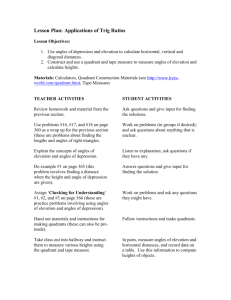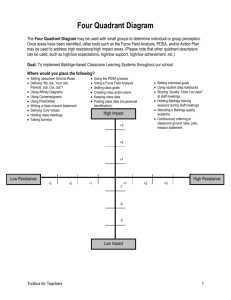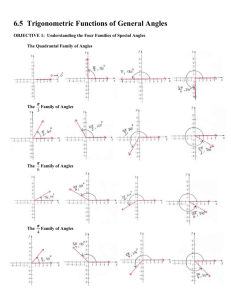The CAST Rule We know that for all angles less than 90° (i.e. angles
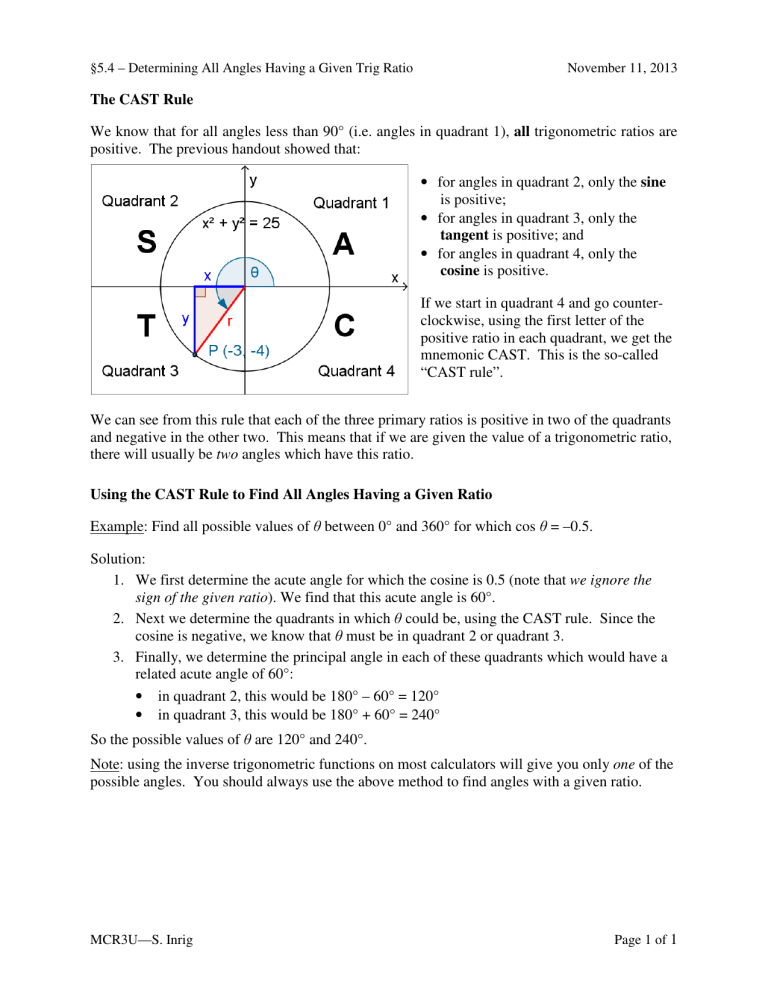
§5.4 – Determining All Angles Having a Given Trig Ratio
The CAST Rule
November 11, 2013
We know that for all angles less than 90° (i.e. angles in quadrant 1), all trigonometric ratios are positive. The previous handout showed that:
• for angles in quadrant 2, only the sine is positive;
• for angles in quadrant 3, only the tangent is positive; and
• for angles in quadrant 4, only the cosine is positive.
If we start in quadrant 4 and go counterclockwise, using the first letter of the positive ratio in each quadrant, we get the mnemonic CAST. This is the so-called
“CAST rule”.
We can see from this rule that each of the three primary ratios is positive in two of the quadrants and negative in the other two. This means that if we are given the value of a trigonometric ratio, there will usually be two angles which have this ratio.
Using the CAST Rule to Find All Angles Having a Given Ratio
Example: Find all possible values of θ between 0° and 360° for which cos θ = –0.5.
Solution:
1.
We first determine the acute angle for which the cosine is 0.5 (note that we ignore the sign of the given ratio ). We find that this acute angle is 60°.
2.
Next we determine the quadrants in which θ could be, using the CAST rule. Since the cosine is negative, we know that θ must be in quadrant 2 or quadrant 3.
3.
Finally, we determine the principal angle in each of these quadrants which would have a related acute angle of 60°:
• in quadrant 2, this would be 180° – 60° = 120°
• in quadrant 3, this would be 180° + 60° = 240°
So the possible values of θ are 120° and 240°.
Note: using the inverse trigonometric functions on most calculators will give you only one of the possible angles. You should always use the above method to find angles with a given ratio.
MCR3U—S. Inrig Page 1 of 1
